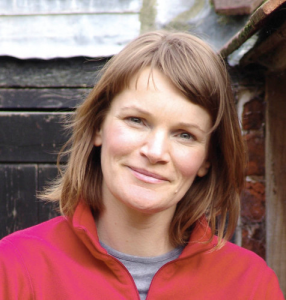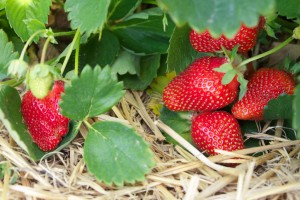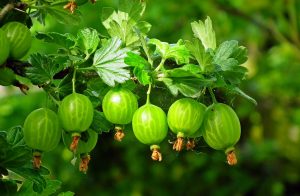
Want to grow your own fruit but bewildered by the choice of crops?
Lucy Chamberlain, Head Gardener at East Donyland Hall, has some pointers.
I’m busy planning our fruit garden this autumn, and a friend asked me to design hers, too. It made me aware that to plan such a productive plot involves lots of daunting decisions. What exactly should I grow, and how many of each plant will I need? It’s tempting at these crossroads to run on autopilot, assuming that you need one row of this and another of that, but the reality can be quite different.
The first and obvious question to ask yourself is what do you like to eat? Are you after a forest garden that you can lightly forage from in the summer, or do you yearn to freeze bag upon bag of produce? I’m a bit of a jam fiend, and with two chest freezers at my disposal am looking to squirrel crops away.
Also determine how much time per week you want to spend maintaining your plot? To me, an hour or two spent in the garden each night is the perfect way to unwind from work, but do you really want to be tethered to the garden this way?
Know your plot
Check your soil type and pH if you don’t know it (you can buy pH kits cheaply from garden centres, and a gardening neighbour can help check if you’re on chalk, loam or clay if you’re unsure). The majority of soils are fine to grow most crops but some, such as blueberries and raspberries, need acidic soil (this has a low pH).
Finally, map the route of the sun over the garden. Certain crops, such as figs, gages, dessert cherries and peaches, need ample sunshine and warmth to ripen well, whereas other, like gooseberries, rhubarb and redcurrants, can take a bit of shade. Note windy, exposed areas that pollinating insects could be shy to visit, and low areas that might be more likely to freeze. Run rows north to south so that valuable, sunny walls aren’t cast in shade.
With your basic checklist complete, now comes the interesting bit – choosing what to grow. Selecting varieties isn’t daunting when you realise what to look for.
While it’s simple to tell the different between ‘Cox’s Orange Pippin’ and ‘Golden Delicious’ apples, you’d be hard pushed to distinguish between different varieties of redcurrants. I think it’s worth going to tasting days to help you choose apples, pears and plums (many larger gardens and fruit specialists run them in autumn) but when it comes to crops such as blackcurrants, raspberries and blueberries, look instead for different maturity times so that you can stagger harvests, and attributes such as disease resistance.

With a bit of careful selection, for example, you can be picking fresh strawberries from May right through until October. In Essex we’re quite dry so diseases aren’t so much of a problem, but move to the rainy West coast and scab and mildew-resistance will become top of your list.
When it comes to quantities, I’m astounded how much space the average family needs to devote to strawberries. Consider an average yield per plant of 400g, compared to that of a single redcurrant bush (10 times that quantity) and you can soon see why a row of the latter isn’t necessary.
Gooseberries and blackcurrants are equally heavy cropping. A 3m row of raspberries will yield around 8kg of fruit, so think twice before buying a huge bundle of canes (unless, like me, your freezer allows it).
Growing trees as fans or espaliers rather than free-standing trees not only allows you to squeeze more plants in, it can easily halve yields. Specialist nurseries are an excellent resource here – one worth its salt will be able to guide you on quantities, and double check that any pollination requirements are met.
Lucy








